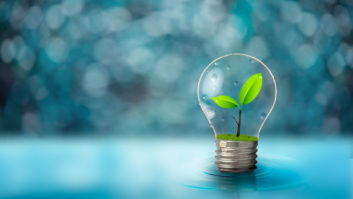New York — The Greener Gadgets Conference, sponsored in part by the Consumer Electronics Association (CEA), outlined pressures our environment is under and the challenges the industry faces in developing eco-friendly products.
Energy efficiency, recycling and green business strategies were among three of many topics discussed during the conference held at the McGraw-Hill Building, here, on Friday.
Saul Griffith, an entrepreneur with several company start-ups to his credit and multiple degrees in materials science and mechanical engineer, gave a sobering keynote on the perils of relying on carbon-based fuels for energy.
Griffith always thought that his lifestyle was rather green, but in an entertaining and educational outline he provided detailed measurements about all his lifestyle activities and found that he wasn’t as “green” as he could or should be.
He also noted, “We now have to choose where humanity should go” in terms of the environment. If energy habits aren’t changed, and rather quickly, worldwide temperatures will go up 1.5 degrees to 3.5 degrees, Griffith said. That would mean a catastrophic impact on the environment later in this century.
Specifically about industry, Griffith said “the business models of the future” especially for CE, would include “heirloom products” that would use one-tenth of the power of current products or would be upgradable to last 10 times longer. The throw-away nature of many CE products won’t be tolerated in the near future.
And he urged any CE suppliers in the audience to “get involved in more video conferencing products” because energy savings will mean less business travel in the future.
The “Measuring Your Hue Of Green” panel had executives from Intel, Dell and environmental experts, who discussed new energy guidelines for CE products. The challenge is how to measure how much energy is needed to design and manufacture products, and how much energy is used in the supply chain.
Aaron Dallek, co-founder and chief technology officer of Panel Metrics, said that to educate consumers on this a product label should indicate how much energy was used in the manufacture and sale of the product.
Stephen Harper, environment and energy policy director for Intel, voiced an opinion of some on the panel, saying for consumers to take notice of the problem, “it has to hit them in the pocketbook with some type of a carbon-focused tax” based on government energy ratings of some type.
And he noted that the CE and IT industries — with its development of products over the years that have created e-commerce solutions, communications products to limit travel and other technologies — have enabled consumers to consume less energy.
The panelists also agreed that better recycling programs and longer lifecycles of products with software upgrades should be goals, but as Harper of Intel said, “Do we want 25-year-old cellphones that can be updated with software? Consumers would probably get sick of [their phones].”
In a panel called “Closing the Loop in Cradle to Cradle” David Thompson, corporate environmental department director of Panasonic; Carl Smith, president/CEO of the Rechargeable Battery Recycling Corp. (RBRC); Michael Newman, VP of ReCellular; and Ron Gonen, CEO of RecycleBank, each outlined their recycling programs and the need for more consumer education on the problem, which could include rewards for those who recycle.
Thompson, who also runs Electronic Manufacturers Recycling Management (MRM), a joint venture in the U.S. of Panasonic, Sharp and Toshiba to recycle products, said the operation that was announced last January has 280 drop-off points for products nationwide. “That’s not enough for the entire country but we have a 400- to 600-location target over the next two years. We need collaborative efforts like this,” between manufacturers and collaborations with state and local governments.
RBRC is a collaborative 15-year effort that recycles 7 million pounds of rechargeable batteries every year, Smith said. There are 40,000 sites nationwide and, unlike ReCellular, which repackages and fixes 75 percent to 80 percent of all the cellular phones they receive because they are not damaged, Smith said all of the metals in the batteries it processes are reused by industry.
Newman of ReCellular sounded the alarm that even today, with such programs in place “80 to 90 percent of CE products are not recycled. There aren’t enough drop-off places. Even though consumers care about the environment, many won’t take the time to find out about recycling.”
Gonen, whose RecycleBank provides consumers with points that they can use to shop at many participating businesses, said, “We have to come up with a system that with either ‘reward’ consumers who recycle or ‘fine’ those who don’t. If we don’t do that, we won’t see a dramatic change in [consumer] behavior.”
There was also a Greener Gadgets Design Competition awards competition. It featured 10 eco-design innovations, which had been selected from among 50 product submissions as the coolest greener gadgets. Based on audience feedback and the judges’ consensus, Tweet-a-Watt received the winning prize with its power meter that automatically publishes your power usage wirelessly for all of your friends and followers to see. The Power-Hog, a power consumption monitoring piggy bank, won second place.













